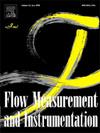Sparse reconstruction of ECT based on L1 regularization and nuclear regularization with the split Bregman iteration
IF 2.7
3区 工程技术
Q2 ENGINEERING, MECHANICAL
引用次数: 0
Abstract
Electrical capacitance tomography (ECT), which is a versatile tomography technique for imaging the permittivity distribution based on the capacitance measurements. Image reconstruction of electrical capacitance tomography is ill-posed and ill-conditioned, which makes the solutions not unique and sensitive to measurement disturbance. In this study, a multi-feature objective functional that combines L2-norm as data fidelity term, L1 regularization and nuclear regularization as regularizers is proposed to improve the imaging quality. The proposed method emphasizes the sparsity and low-rank characteristics of the imaging object and transforms the image reconstruction task into an optimization problem. The Split Bregman algorithm is introduced to efficiently solve the proposed objective functional by decomposing the complex optimization problems into several simple iterative sub-tasks. Numerical simulations verified the effectiveness of the proposed method. In addition, a flexible modular 8-electrode ring-shaped ECT system is constructed to further test the effectiveness of the proposed method.
基于L1正则化和核正则化的分割Bregman迭代ECT稀疏重建
电容层析成像(ECT)是一种多功能的层析成像技术,用于基于电容测量对介电常数分布进行成像。电容层析成像的图像重构具有病态性和病态性,使得解不唯一,且对测量扰动敏感。本文提出了一种结合l2范数作为数据保真度项,L1正则化和核正则化作为正则化项的多特征目标函数来提高成像质量。该方法强调成像对象的稀疏性和低秩性,将图像重建任务转化为优化问题。采用Split Bregman算法,将复杂的优化问题分解为几个简单的迭代子任务,有效地求解目标泛函。数值仿真验证了该方法的有效性。此外,为了进一步验证该方法的有效性,构建了一个柔性模块化8电极环形电痉挛系统。
本文章由计算机程序翻译,如有差异,请以英文原文为准。
求助全文
约1分钟内获得全文
求助全文
来源期刊

Flow Measurement and Instrumentation
工程技术-工程:机械
CiteScore
4.30
自引率
13.60%
发文量
123
审稿时长
6 months
期刊介绍:
Flow Measurement and Instrumentation is dedicated to disseminating the latest research results on all aspects of flow measurement, in both closed conduits and open channels. The design of flow measurement systems involves a wide variety of multidisciplinary activities including modelling the flow sensor, the fluid flow and the sensor/fluid interactions through the use of computation techniques; the development of advanced transducer systems and their associated signal processing and the laboratory and field assessment of the overall system under ideal and disturbed conditions.
FMI is the essential forum for critical information exchange, and contributions are particularly encouraged in the following areas of interest:
Modelling: the application of mathematical and computational modelling to the interaction of fluid dynamics with flowmeters, including flowmeter behaviour, improved flowmeter design and installation problems. Application of CAD/CAE techniques to flowmeter modelling are eligible.
Design and development: the detailed design of the flowmeter head and/or signal processing aspects of novel flowmeters. Emphasis is given to papers identifying new sensor configurations, multisensor flow measurement systems, non-intrusive flow metering techniques and the application of microelectronic techniques in smart or intelligent systems.
Calibration techniques: including descriptions of new or existing calibration facilities and techniques, calibration data from different flowmeter types, and calibration intercomparison data from different laboratories.
Installation effect data: dealing with the effects of non-ideal flow conditions on flowmeters. Papers combining a theoretical understanding of flowmeter behaviour with experimental work are particularly welcome.
 求助内容:
求助内容: 应助结果提醒方式:
应助结果提醒方式:


